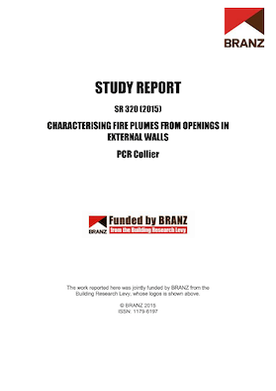
SR320 Characterising fire plumes from openings in external walls (2015)
Product Description
This literature review is targeted at understanding the development of window fire plumes from openings in the external walls of buildings. The purpose is to characterise the likely thermal exposure conditions for evaluating potential horizontal and vertical fire spread scenarios.
Of prime importance is the relative quantity of a compartment’s vapourised combustibles that burn outside. This contributes to the external flaming as opposed to the quantity that burns inside the compartment, heating and vapourising the remaining fuel load. Coupled with this is the opening factor of the vent(s), which plays a role in how much heat is retained in the compartment. The opening factor controls the airflow inwards that supports combustion of the fuel as well as the hot exhaust gases outwards that allows heat to escape from the compartment.
External flaming and hence fire spread becomes more likely when more fuel is being vapourised due to heating within a compartment than can be combusted with the oxygen supplied inside. This excess fuel exits the compartment unburned and then burns as an external fire when mixed with fresh air. The challenge is in determining the potential of the external flaming process. Once this is known, probability based values can be assigned to the heat flux on the façade above an opening and on to adjacent buildings using the computational fluid dynamics (CFD) model. Fire dynamics simulator (FDS) is by comparison a relatively easy task.
Product Information
| Publication date | 2015 |
|---|---|
| Author | PCR Collier |
| System number | SR320 |